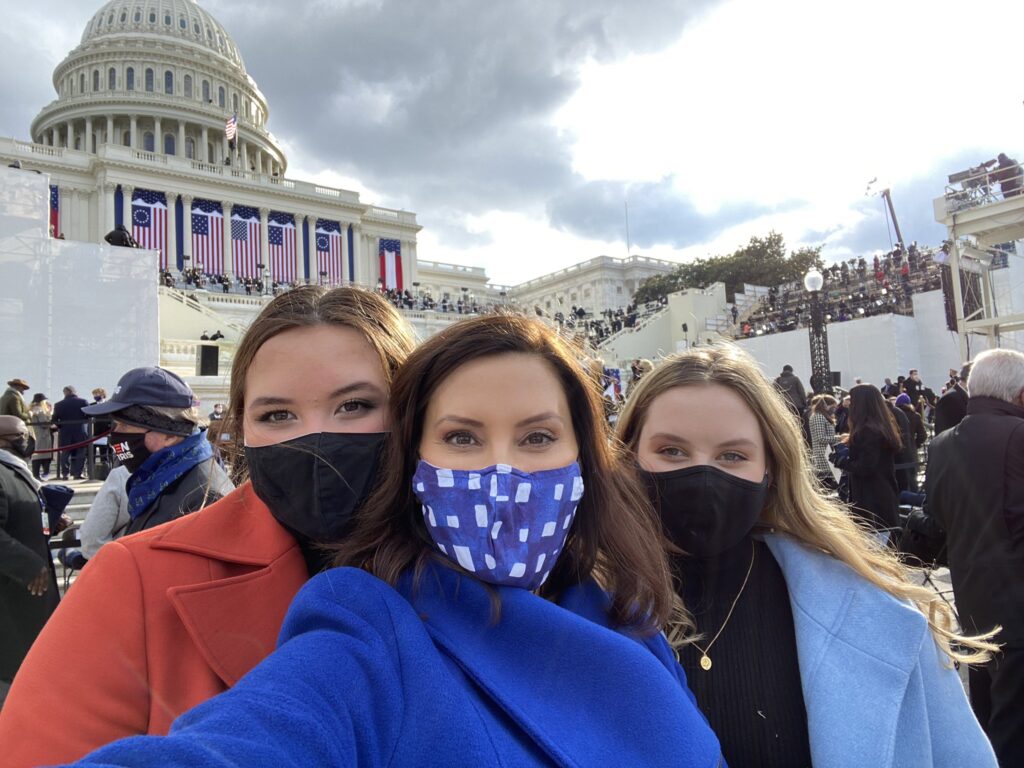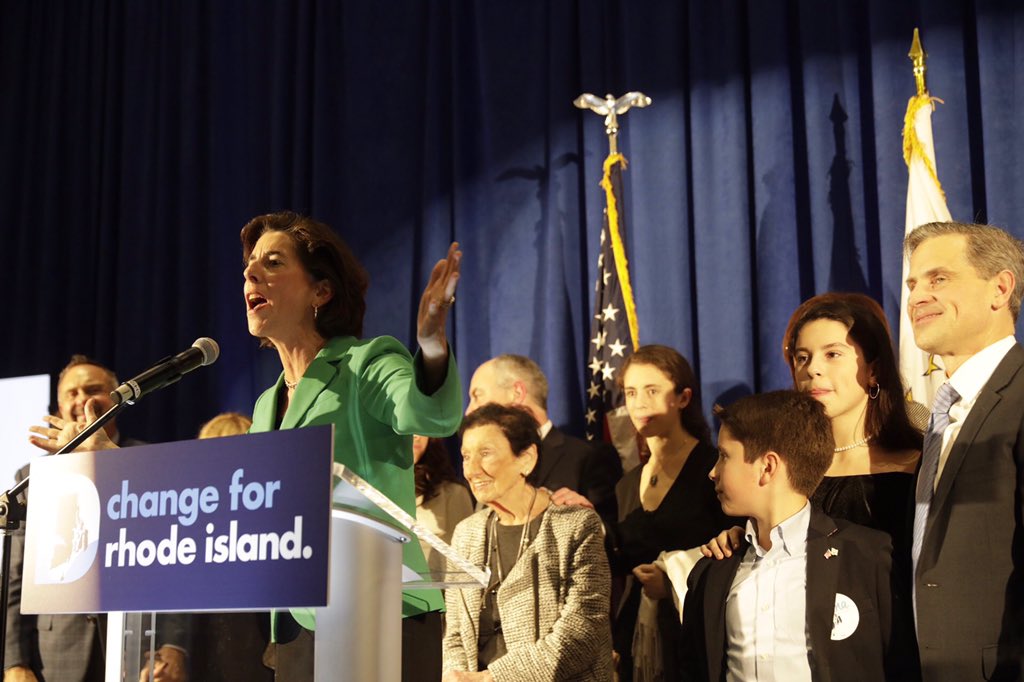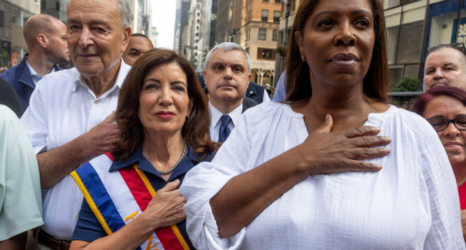The 2018 and 2020 election cycles demonstrated that women are emerging as a significant force as political donors. The 2021 and 2022 races present an opportunity for women to flex that power and make their mark in gubernatorial elections.

This piece was originally published by the Center for American Women and Politics (CAWP).
Within the next two years, 38 states will hold gubernatorial elections, including two states—Virginia and New Jersey—who will hold gubernatorial elections in November 2021. These elections provide multiple opportunities for women. Nine women currently serve as governor and just 44 women have ever served in gubernatorial office in U.S. history. Candidates, including some potential women candidates, are already jockeying for the governors’ offices.
But running for office isn’t the only way women can participate in politics and wield power. Political donations provide critical resources that help candidates win elections and they signal that a candidate has support and the potential to be competitive.
Furthermore, research finds that candidates and party leaders are more attentive to the interests of political donors. The 2018 and 2020 election cycles demonstrated that women are emerging as a significant force as political donors, and the 2021 and 2022 races present an opportunity for women to flex that power and make their mark in gubernatorial elections.
In a recent CAWP report The Money Hurdle in the Race for Governor, co-authors Kira Sanbonmatsu, Kathleen Rogers and I note the dearth of women governors and the challenges women candidates face in seeking gubernatorial office. Our research also reveals that women’s giving in gubernatorial elections hasn’t reached its potential. Women make up a majority of the American electorate and vote at higher rates than men yet have lagged behind in terms of political giving. That tide may be turning.
What Did Our Analysis Suggest?
In our analysis of individual contributions, we used CAWP data as well as data from the National Institute on Money in Politics (NIMP) that estimates the gender of contributors. We found that men outnumber women donors within both political parties and in both primary and general gubernatorial elections from 2000 to 2018. Men were the majority of contributors in all years, with the notable exception of 2018 when women were about half of donors to Democratic candidates. This is similar to patterns seen in 2018 at the congressional level where donations from women increased but disproportionately benefited Democratic candidates.

Within both parties, women are more likely to give to women candidates. The previous research on gender affinity donating is mixed. Some scholars have found women are just as likely to give to male candidates as they are women candidates. Others have found that gender affinity donating only occurs on the Democratic side of the aisle. We find evidence that a greater proportion of contributors to both Democratic women and Republican women candidates are women.
In our analysis of general elections (woman vs. man contests), women were a little over half (51 percent) of individual donors to Democratic women, compared to 41 percent for Democratic men and about a third (33 percent) of individual donors to Republican women compared to 31 percent for Republican men.

When we looked at the proportion of receipts from women donors, we found that the total amount of women’s individual contributions to gubernatorial candidates was lower than the total amount given by men across the 2000-2018 period. In our analysis of general elections (woman vs. man contests), men provided the majority of the money raised for gubernatorial candidates through individual contributions. Variation emerged when we disaggregated the data by candidate party and gender, but among all four candidate types, women were the minority of individual contributors in general elections.

What Does This Mean for 2021 and 2022?
Our analysis shows that donations from women to gubernatorial campaigns increased in 2018 compared to previous years. And according a joint report from the National Institute on Money in Politics (NIMP) and the Center for Responsive Politics (CRP), the share of women giving money to federal political campaigns in 2020 was 45 percent—the highest percentage on record. However, in both of these analyses, women make up a smaller percentage of contributors and give less overall to campaigns than men, suggesting that women’s voices as expressed in campaign donations still lag behind men’s.
In future gubernatorial elections, women donors can expand their influence. However, women’s increased participation in the donor sphere will almost definitely disproportionately benefit Democratic candidates.
Our own analysis of gubernatorial campaigns indicated the increase in donations from women in 2018 only occurred on the Democratic side. Trends at the congressional level show the same party line break in women’s 2018 donations. Women donors will likely be especially important to Democratic women candidates for governor in 2021 and 2022. Although we found evidence of gender affinity donating on both sides of the aisle, this also seemed to benefit Democratic women gubernatorial candidates more than Republican women.

These possibilities assume a continued upward trend in women’s political giving, however. In addition to many other variables, the ongoing coronavirus pandemic may influence women donors’ engagement in upcoming elections.
On one hand, the pandemic has caused women to leave the work force at higher rates than men, which casts doubt on the idea that women’s giving will continue in a positive direction. On the other hand, the consequences and disruptions of the pandemic have been particularly brutal for women in ways that could evoke a sense of urgency to shape electoral outcomes by investing in candidates.
Research has also shown that women place a higher degree of importance on social welfare issues than men. These issues include health care access and costs, government spending on education, unemployment, and childcare. The pandemic has increased both the salience of these issues and the important role of governors in managing this crisis. Although it is speculative, these factors could work to bolster women’s participation in the gubernatorial donor sphere.
As we look ahead to the most important political contests of the next two years—those selecting states’ top executives, we should be paying attention not only to the women on the ballot, but also to the women donors who can influence who makes it from the ballot to the governor’s mansion.
You may also like:





